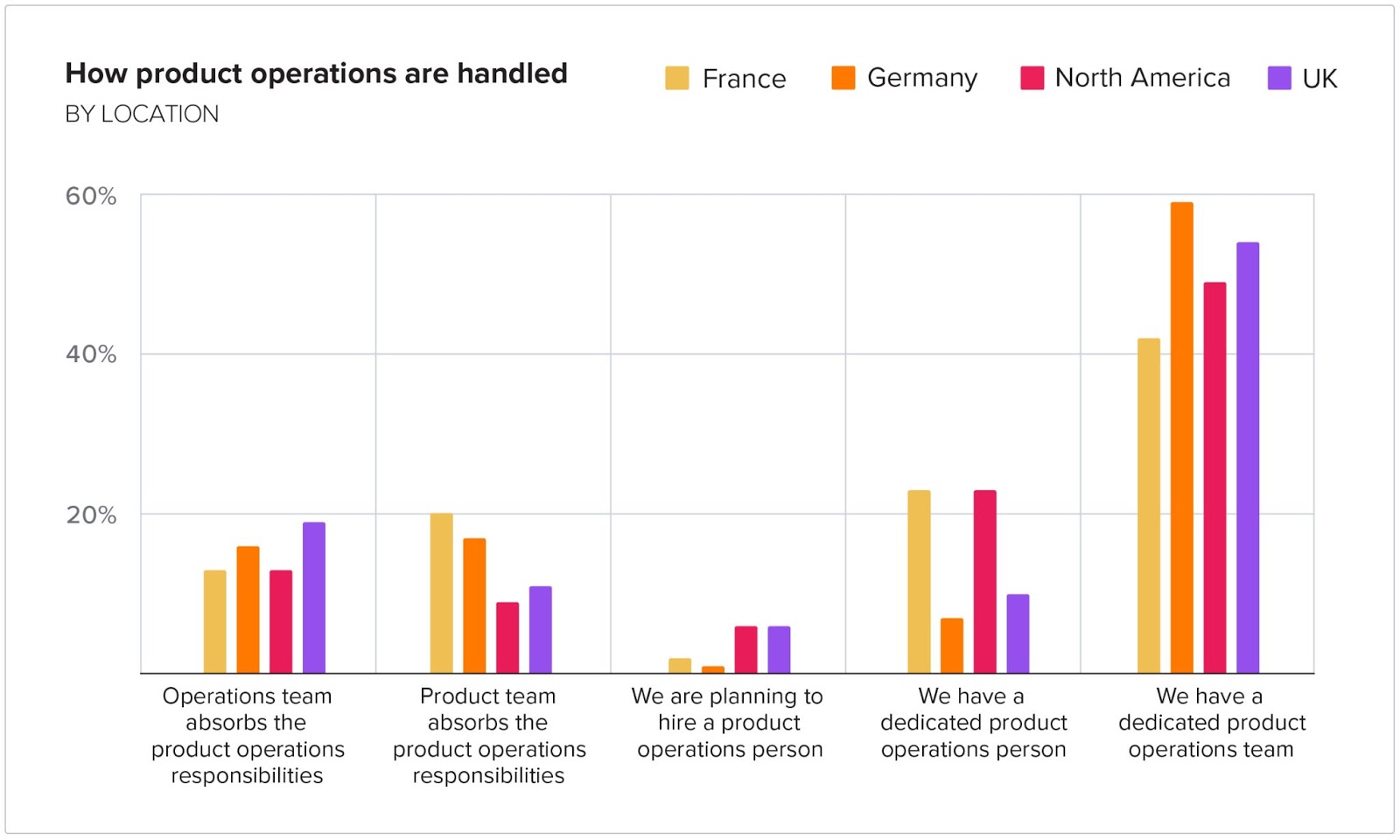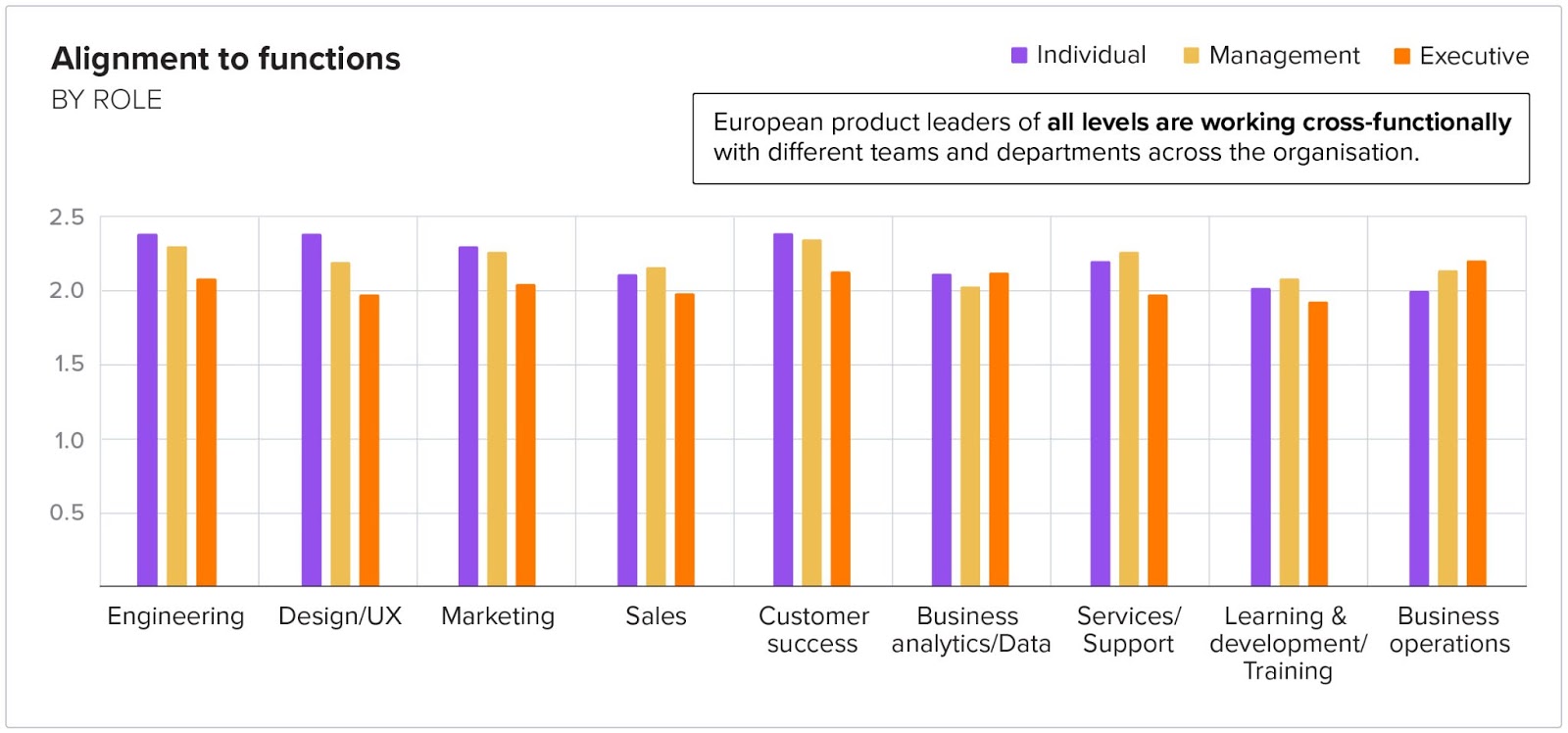After gaining traction in recent years, product operations (also known as product ops) teams are sprouting up in companies of all shapes and sizes. This function exists to support the R&D team and their go-to-market counterparts to improve alignment, communication, and processes around all things related to the product. As more businesses invest in digital transformation and rely on their product teams to own these efforts, having this level of operational support is even more critical.
In fact, in this year’s State of Product Leadership: Europe report, 44% of respondents indicated that they have a dedicated product operations team at their company. What’s more telling is the change from last year: In the 2020 report, only 26% of European product leaders had access to a product ops team. When we examine this at the country level, having a dedicated product operations team was the most common scenario across product leaders in France, Germany, and the UK.

While product operations teams support their product manager counterparts in a variety of ways, helping to drive more (and better) collaboration is particularly crucial when it comes to digital transformation initiatives. Digital transformation requires buy-in and cross-functional alignment from the entire organization, making it no surprise that our survey found product leaders are in close alignment with engineering, design, marketing, and sales teams. This was also true across all job levels, with independent contributors, managers, and executives equally likely to be working cross-functionally with different teams and departments.

So, how do product operations teams enable European product managers to collaborate more effectively? Here are three ways product ops help fuel collaboration for PMs:
1. A central source of product data
While using product data is naturally part of any product team member’s day-to-day, when companies are product led, this data serves as a shared language across the organization. But this doesn’t happen if there isn’t a focused effort to collect, analyze, and manage all of this data in a central location.
Product ops is responsible for collecting and managing product data from multiple sources, as well as analyzing it and sharing insights with stakeholders across the company. Better yet, product ops should enable the entire organization with the ability to self-serve and easily access product data on their own. When product data is shared in this way, it fuels better collaboration between product and its key partners throughout the company–from sales and marketing to customer success and support.
2. Launch coordination
Another important data point coming out of the 2021 State of Product Leadership: Europe report was that product/feature/roadmap delivery is the top primary success metric for European product leaders who work on customer-facing apps. PMs are hyper-focused on delivering what they promise, and every new product, feature, or roadmap item needs some sort of coordinated launch or release. Enter: product ops.
Launching a new product or feature requires joint effort across product, marketing, sales, and customer success, and product ops sits at the intersection of these teams to ensure everyone is on the same page. Especially when product teams are constantly releasing new features to serve a larger initiative (like digital transformation), product operations is critical to communicating to the wider organization and arming PMs with the appropriate documentation and collateral.
3. Managing the product tech stack
Product teams rely on a lot of tools to do their jobs, but with each new system comes more confusion about which one does what, who the admin is, and what best practices look like. This can be distracting, and take time out of PMs’ days that should be spent on strategic and high-priority projects.
For companies with a dedicated product operations function, the product ops team both manages the entire product tech stack and creates processes and training so that the broader team gets the most out of each tool. This way, PMs spend less time figuring out how to use the tools at their disposal, and more time utilizing them to collaborate with other team members and drive initiatives forward.


